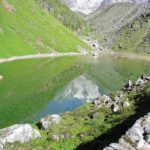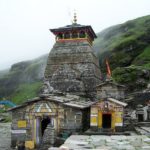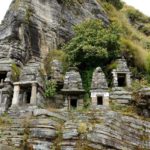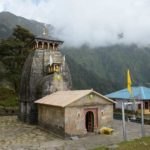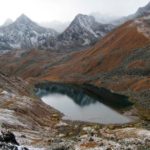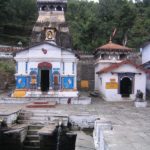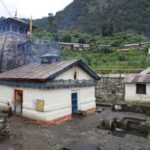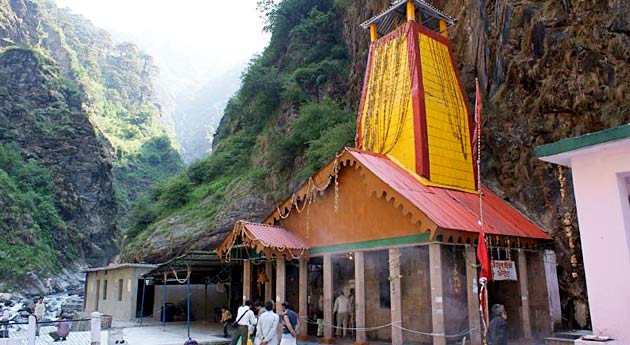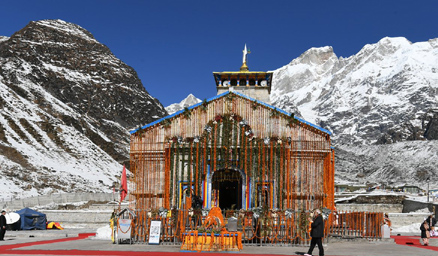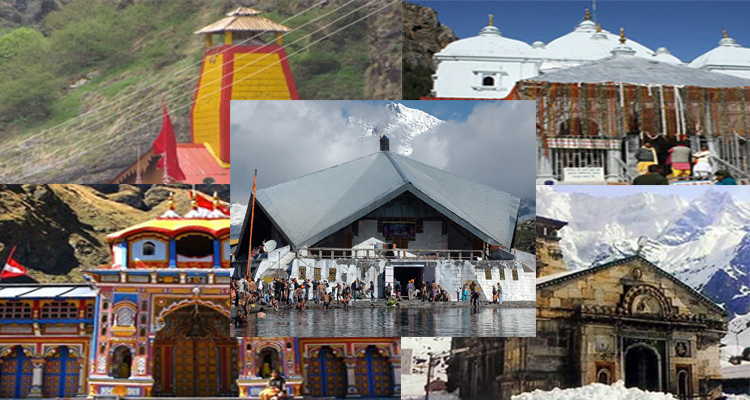Kedarnath, the famous Temple that is holy of Shiva is situated at the height of 3583 m above sea-level on a marshy ordinary, on the slope of Himalyas. Kedarnath is the spot where Lord Shiva Lingam was installed in the temple that is stunning the perpetual snow clad exists on the Himalayas and down to the flower-decked Mandakini Valley. The temple that is ancient of was built by Pandavas. This might be one among Dwadasha Jyotirlinga. The statues of Godess Parvati, Pandva, Godess Lakshmi etc are situated in outer area of temple. Hanskund is situated near to Kedarnth temple where Shradha-Tarpan is use to perform for Moksha of Pitra (the ancestors). Amritkund is situated behind the Kedarnath temple and Retas kund is found at little distance from temple. The pond of cool water (ice) is located very near to temple which is the origin of river Mandakini. Uddandkund is situated at several distances from temple which has a importance that is great history. Capital: Dehradun (Winter) ; Gairsain (Summer), Location: Uttarakhand (India) May to June and September to October is an ideal time to pay a visit to Kedarnath Yatra and Peak Season starts from May to June & September to October. Kedarnath is one of the most sacred pilgrimages of Lord Shiva situated in Rudraprayag district of Garhwal region in Uttarakhand. Kedarnath is among the Char Dham in Uttarakhand plus the most dham that is important Panchkedar. Kedarnath is found at an altitude of 3586 mts, within the lap associated with mountain that is majestic and near the mind of river Mandakini. Within the Kedarnath range appears certainly one of the twelve Jyotirlingas of Lord Shiva. 3 Full Days Dehradun (264 Kms) Summer Monsoon Winter Video By : Youtube User – Popcorn Trip Have any questions related to visit Yumnotri Temple? Get clear your every doubts about Kedarnath Yatra and trek from these Frequently Asked Questions. Kedarnath FAQs are prepared to answer all major queries from a pilgrims point of view. Burdened with the guilt of killing their blood relatives, Pandavas sought Lord Shiva to absolve themselves of their sins. Shiva didn’t want to release them from their wrongdoings so easily and disguised himself as a bull to roam in Garhwal Himalayas. On being discovered by Pandavas, Shiva dived into the ground. Bhim tried to catch him and could only get hold of the hump. Other body parts of Shiva (in the form of bull), came up at different places. Hump of the bull was found in Kedarnath, navel emerged at Madhya-Maheshwar, two forelegs appeared at Tunganath, face in Rudranath, and hair came up at Kalpeshwar. Together these five sacred places are called Panch Kedar. It is believed that originally Pandavas built the temple of Kedarnath; the present temple was established by Adi Shankaracharya who restored and revived the glory of the shrine. Burdened with the guilt of killing their blood relatives, Pandavas sought Lord Shiva to absolve themselves of their sins. Shiva didn’t want to release them from their wrongdoings so easily and disguised himself as a bull to roam in Garhwal Himalayas. On being discovered by Pandavas, Shiva dived into the ground. Bhim tried to catch him and could only get hold of the hump. Other body parts of Shiva (in the form of bull), came up at different places. Hump of the bull was found in Kedarnath, navel emerged at Madhya-Maheshwar, two forelegs appeared at Tunganath, face in Rudranath, and hair came up at Kalpeshwar. Together these five sacred places are called Panch Kedar. It is believed that originally Pandavas built the temple of Kedarnath; the present temple was established by Adi Shankaracharya who restored and revived the glory of the shrine. Kedarnath Dham, located in the Rudraprayag district of Uttarakhand, is one of the most paramount locations for worshipers of Shiva. The air appears to be reverberating with the name of Lord Shiva amid the mighty snow-clad peaks, enchanting meadows and forests of the lower mountain range of Himalayas. Situated in a breathtaking location, near the source of Mandakini River and at the height of 3,584 meters, Kedarnath Dham celebrates the greatness of Lord Shiva. Kedarnath temple is one of the 12 Jyotir Lingams and is also the most important temple among the Panch Kedars (group of 5 Shiva temples in Garhwal Himalayas). It is also one of the significant temples of the sacred Chota Char Dham Yatra in Uttarakhand, raising the glory of the place to further heights. Accessible from major destinations of Uttarakhand, the motorable road towards Kedarnath temple stretches till Gauri Kund. After that one needs to take a 14 km trek towards Kedarnath temple. Ponies and palanquins (doli) are easily available; one can also avail helicopter services during peak season of yatra. The hard journey till the great shrine of Shiva is well compensated with the spiritual atmosphere which is created by the unruffled, tranquil and splendid beauty of the region. The majestic Kedarnath peak (6,940 meters) stands behind the temple along with other peaks, forming a perfect setting for the holy land of the supreme deity. The conical-shaped Shiva lingam in the Kedarnath temple is a unique feature of the temple among all Shiva shrines. Kedarnath Temple Opening Dates 2020 The date for the opening of the portals of the holy Kedarnath Dham in 2020 will be declared on the Hindu festival of Mahashivratri, which is to be held on February 21, 2020. [carousel_slide id=’8730′] Kedarnath is amongst the many sacred pilgrimages of Lord Shiva situated in Rudraprayag district of Garhwal region in Uttarakhand. Kedarnath is certainly one associated with Char Dham in Uttarakhand while the most dham that is crucial Panch kedar. Kedarnath is found at an altitude of 3586 mts, in the lap for the mountain that is majestic and near the head of river Mandakini, Kedarnath range stands one of the twelve Jyotirlingas of Lord Shiva. [carousel_slide id=’9311′] [carousel_slide id=’9311′] [carousel_slide id=’9311′] Preparations for the Chardham Yatra are going on in full swing in the state. Kapat of world famous Baba Kedarnath Dham will be opened for devotees on May 17 at 5 am. Devotees will be able to reach Baba Kedarnath ‘s Dham through heli service . Booking for Heli service will begin from April 1 The doors of Kedarnath Dham are to open on April 29. 43 years later, this time Baba Kedar’s Doli was taken from Gaurikund from Ukhimath. Earlier in 1977, Baba Kedar’s Doli was moved from Ukhimath to Guptkashi. At the same time, devotees also could not see Baba’s doli due to the doli going in the
YUMNOTRI DHAM YATRA
BEST TIME TO VISIT YUMNOTRI TEMPLE
WHY VISIT YUMNOTRI
IDEAL TRIP DURATION
NEAREST CITY TO YUMNOTRI
TEMPERATURE
5°C to 12°C
(April to June)12°C to 10°C
(July to September)5°C to -4°C
(October to February)
Yumnotri FAQs
LEGEND BEHIND THE YUMNOTRI TEMPLE
WHAT TO SEE IN YUMNOTRI DHAM?
YUMNOTRI DHAM
YUMNOTRI YATRA PACKAGES
READ OUR CHARDHAM BLOGS & UPDATES
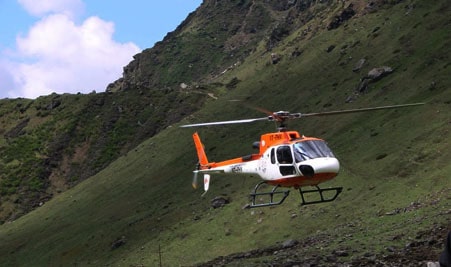
Helicopter service for Kedarnath Temple 2024
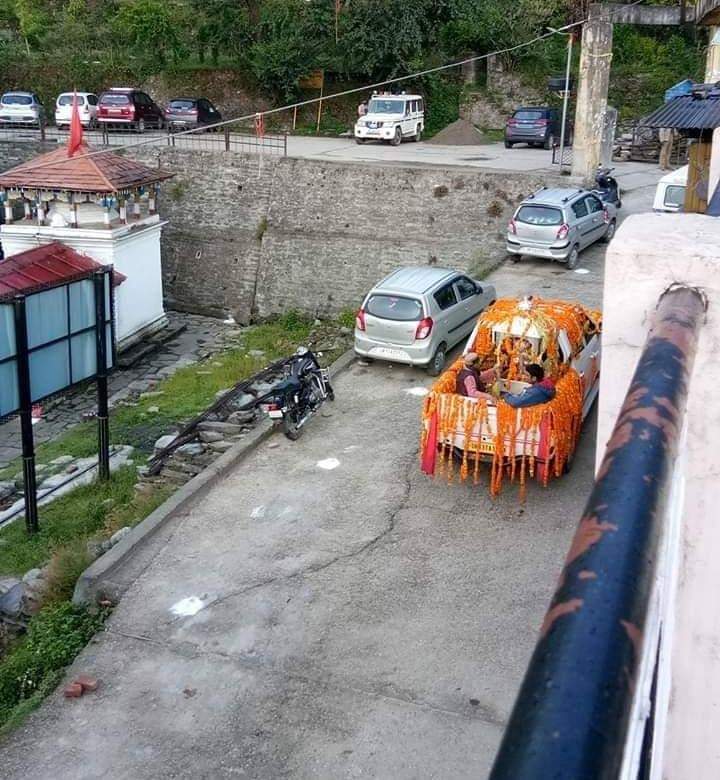
Baba Kedar’s ‘doli’ leaves for Kedarnath Dham

